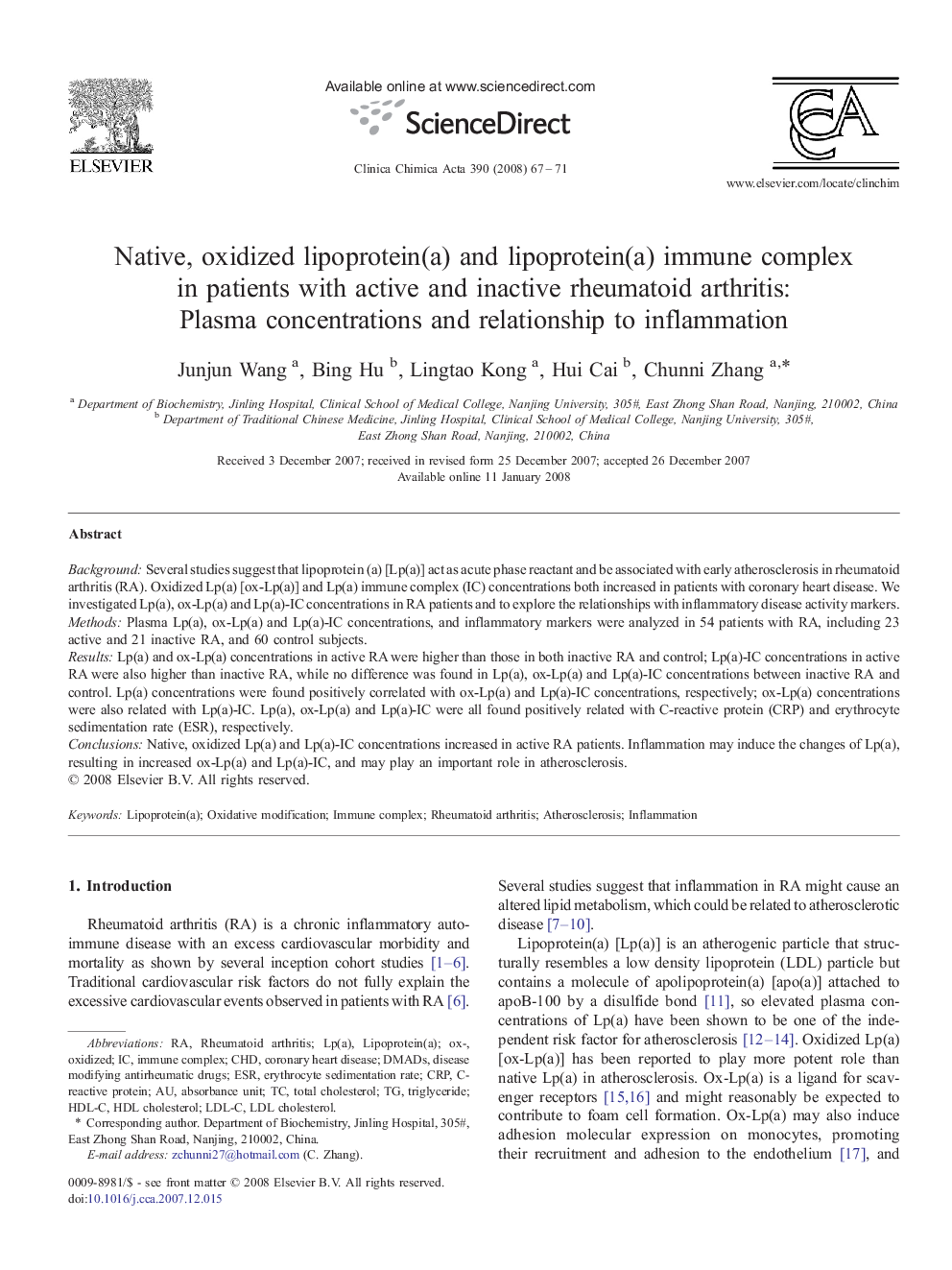| Article ID | Journal | Published Year | Pages | File Type |
|---|---|---|---|---|
| 1967088 | Clinica Chimica Acta | 2008 | 5 Pages |
BackgroundSeveral studies suggest that lipoprotein (a) [Lp(a)] act as acute phase reactant and be associated with early atherosclerosis in rheumatoid arthritis (RA). Oxidized Lp(a) [ox-Lp(a)] and Lp(a) immune complex (IC) concentrations both increased in patients with coronary heart disease. We investigated Lp(a), ox-Lp(a) and Lp(a)-IC concentrations in RA patients and to explore the relationships with inflammatory disease activity markers.MethodsPlasma Lp(a), ox-Lp(a) and Lp(a)-IC concentrations, and inflammatory markers were analyzed in 54 patients with RA, including 23 active and 21 inactive RA, and 60 control subjects.ResultsLp(a) and ox-Lp(a) concentrations in active RA were higher than those in both inactive RA and control; Lp(a)-IC concentrations in active RA were also higher than inactive RA, while no difference was found in Lp(a), ox-Lp(a) and Lp(a)-IC concentrations between inactive RA and control. Lp(a) concentrations were found positively correlated with ox-Lp(a) and Lp(a)-IC concentrations, respectively; ox-Lp(a) concentrations were also related with Lp(a)-IC. Lp(a), ox-Lp(a) and Lp(a)-IC were all found positively related with C-reactive protein (CRP) and erythrocyte sedimentation rate (ESR), respectively.ConclusionsNative, oxidized Lp(a) and Lp(a)-IC concentrations increased in active RA patients. Inflammation may induce the changes of Lp(a), resulting in increased ox-Lp(a) and Lp(a)-IC, and may play an important role in atherosclerosis.
